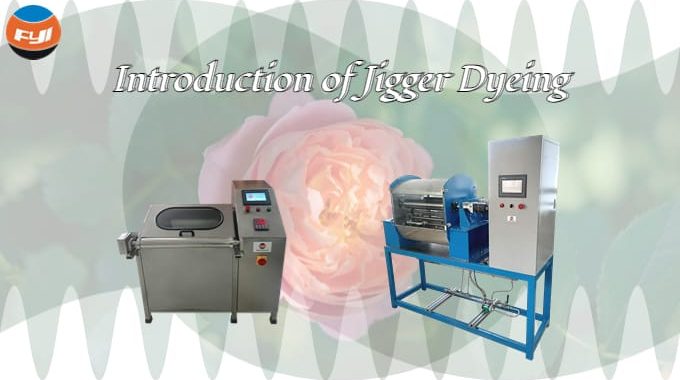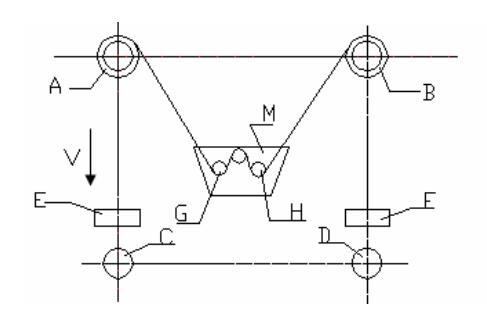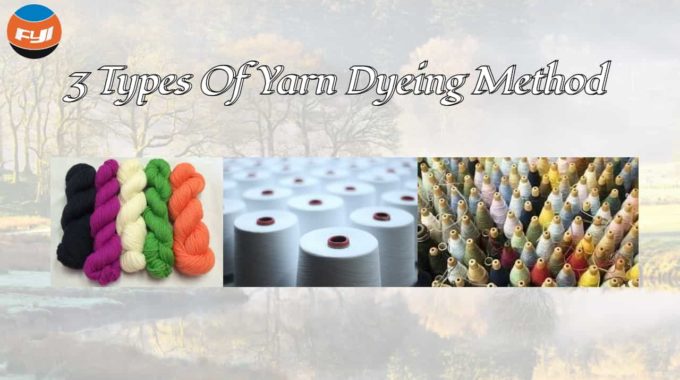
Introduction of Jigger Dyeing
Jigger dyeing, a method of fabric dyeing performed on a jigger. The fabric is wound up on one roll of the jigger and passed through the dye bath to the other roll. After rolling, repeat in reverse until the fabric is evenly dyed in the desired color. It is an intermittent production method, suitable for small batch production of many varieties. The basic working process is to repeatedly pass the fabric of a certain length and width through the dye solution of a certain concentration and temperature, and complete a certain number of reciprocations according to the process requirements, so that the dye can be colored on the fabric. Therefore, the process of jigger dyed products is simple.
Contents
Structure and working principle
The working principle of the jigger is that two rollers with the same geometric size, including a fabric take-up roller and a cloth release roller, drive the fabric to reciprocate dyeing in the dye liquor tank until the process requirements are met. As the jigger progresses, the diameter of the fabric winding roller increases gradually, and the diameter of the cloth releasing roller decreases gradually. In order to achieve constant linear speed dyeing of fabrics, the rotational speed of the cloth winding roller is required to be gradually reduced, and the cloth winding roller is required to be steplessly adjusted.
The constant line speed adjustment of the fabric has experienced several speed regulation forms such as purely mechanical differential mechanism, hydraulic motor speed regulation, winding motor and DC motor. Although the DC motor has the advantages of large starting torque and wide speed range, it is easy to burn out the windings in the environment of high temperature and high humidity. Moreover, slip rings and electric brushes also need frequent maintenance, and the DC speed control system and computer interface are more troublesome, and it is also more difficult to realize automatic control.

A: Cloth roll B: Cloth roll c: Motor D: Motor E: Gear box F: Gear box G, H guide roll M: Dye liquor tank V: Wiring speed
According to the requirements of the jigger dyeing process, the jigger tension F of the fabric is constant. For this reason, the working feature of the jigger is that two identical motors C, D, through two identical gear boxes, drive A, B, two rollers with identical diameters. The fabric is dip-dyed in the dye vat by roller B through fabric guide rollers C and H, and then rolled onto roller A. At this time, motor C is in the motoring state, while motor D is in the dragging state. And ensure that the fabric maintains a certain tension F during the dyeing process. Running in the forward direction until all the fabrics are dyed onto roll A, the motor brakes, stops and reverses through the electric automatic control system. The fabric is then dip-dyed by roll A through the dyeing vat and then rolled onto roll B, and this cycle repeats until the requirements are met. The design of electrical automatic control system is carried out according to this process requirement.
Jigger dyeing process
1. Check the jigger fabric: Check the quality of the fabric, check the structure of the fabric, check the color of the fabric, check whether the fabric is stained, check the width and thickness of the fabric, and the dyeing requirements of the fabric.
2 Pretreatment: According to the quality and dyeing requirements of the fabric, adopt appropriate pretreatment process, such as soaking, alkali washing, chlorine washing, etc., to prepare the fabric for dyeing.
3. Jigger dyeing: put the pretreated fabric into the jigger, add dyes, and dye according to the dyeing requirements.
4. Printing and dyeing: Put the dyed fabric into the printing and dyeing machine, add printing and dyeing agent, and carry out printing and dyeing according to the dyeing requirements.
5. Finishing: Put the printed and dyed fabric into the finishing machine, add finishing agent, and finish according to the dyeing requirements.
6. Check and report: Check the dyeing effect, report the dyeing effect, and determine the dyeing quality.
There are some caveats to be aware of:
- Chemicals: The dyes must be fully stirred and dissolved in the chemical tanks before they can be put into the machine tank, otherwise the cloth surface may have color lake stains
- Temperature: It must be covered and kept warm to keep the temperature of the liquid above and below the liquid in the cylinder consistent.
- Heating up: When adding steam to raise the temperature, the cloth roll cannot be operated, otherwise the temperature difference between front and back will cause color difference
- Head and tail: Before operation, ensure that the temperature of the cloth rolling roller is not much different from the temperature under the liquid. In winter, it is necessary to prevent the cloth rolling roller from being too cold so that the cloth layer in contact with the rolling roller is cooled. Let it increase the temperature.
The function and advantages of jigger dyeing machine
The role of the jigger in the dyeing process is unquestionable. From ancient times to the present, there have been constant references to new technologies. The jigger, commonly known as the dye vat, is an early open-width dyeing machine. It greatly improves the efficiency of dyeing cloth, reduces labor time and improves enterprise benefits. It is suitable for fabric dyeing of direct dyes, reactive dyes, vat dyes and sulfur dyes; It can also be used for desizing, scouring, bleaching, washing and post-processing.
Because of its simple structure, flexible operation, convenient maintenance, low investment cost and wide application, it is especially suitable for multi-variety and small-batch processing and production. Compared with continuous dyeing, jigger dyeing is still considered to be the best quality dyeing method. Although it was used earlier, the number of users has not decreased so far, and it has been developing and improving in recent years. The current dyeing tank is made of stainless steel, and the transmission is changed from linkage to independent drive to realize the constant linear speed winding of the gray cloth. The most attractive thing is the emergence of large-scale dyeing machines with microcomputers. These new developments not only increase the size of cloth rolls, but also the whole process is controlled by microcomputer programs, and the dyeing quality is very stable.
Leave a Reply
You must be logged in to post a comment.



This particular blog post resonated with me deeply, thanks to your personal anecdotes and experiences.
Those who are seeking valuable information and practical advice will find your blog incredibly helpful.
Which aspects of the topic should be further explored in subsequent blog posts? The author delves into this question.
Go ahead and give this article a read – you won’t regret it. It’s a true masterpiece.
I can confidently say that this is one of the best articles I’ve read on the subject. The writer’s expertise shines through in every word.